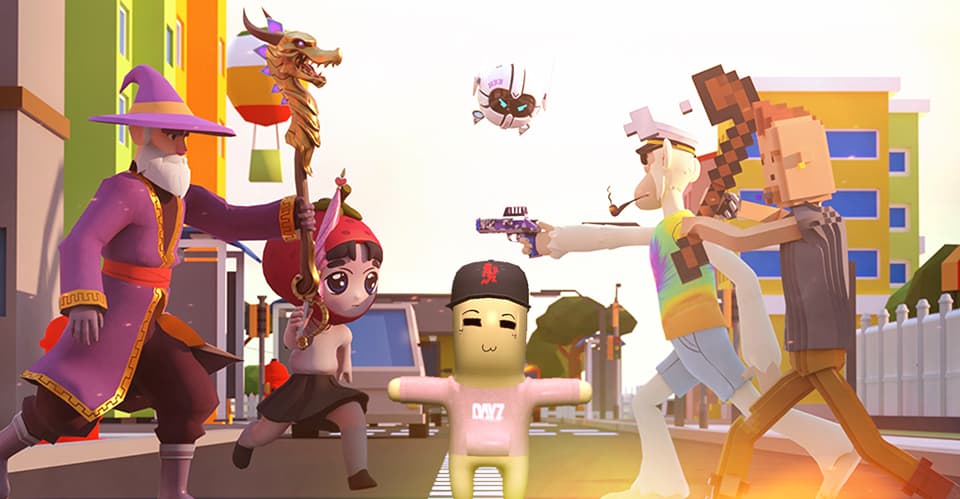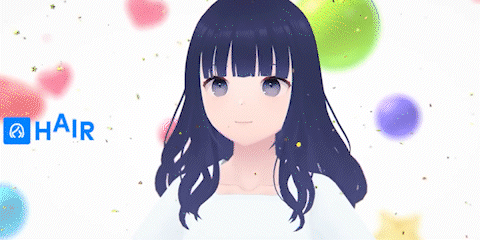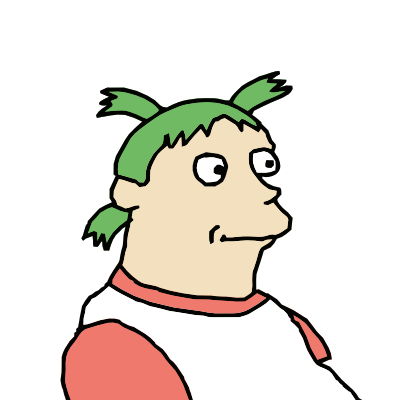Open Interop
How often have you experienced the frustration of a cherished game shutting down, resulting in the loss of your rank, characters, and any in-game assets purchased with real money? It's a tale as old as the gaming industry itself – services closing their servers and erasing the time and money players invested, offering no return on the players' investment.
This issue of total loss is pervasive in all conventional, isolated live service based games, where a studio or company must continue to uphold servers for their online games to remain playable. Unfortunately, these games, once past their prime, are often the first casualties when player interest falls and cost-cutting measures arise.
In recent years, with the emergence of blockchain technology, a new concept for distributing content has surfaced: digital collectibles (though sometimes referred to as NFTs / Non-Fungible Tokens, some like ERC-1155s are Fungible by design), typically in the form of images, videos, or audio files on the web. Any web-native content format can be easily tokenized and presented as an NFT.

The primary advantage of protocols like NFTs is that they are hosted in a decentralized manner spread over many servers where each has an intrinsic financial motivation to stay running.
Each crypto token could point to an IPFS hosted JSON metadata file, which, in turn, could link to an IPFS location where the content is stored. IPFS works based on file hashes, so if at least one person in the world has a copy of a file, they can always repin that file back onto the IPFS network. This ensures that the tokens persist on the net indefinitely, with decentralized servers providing hosting for them in a resilient and future proof way.
What does open interop mean for the gaming industry? If you're not familiar with the term "interoperability," here's a brief explanation. Web interoperability refers to the ability of your web browser to handle images, videos, and audio formats like MP3 and WAV in a way that is compatible with other browsers, your operating system, and various software designed to run them.
These file formats act as wrappers for content, ensuring that it can be viewed seamlessly across a wide range of programs. Web interoperability is characterized by a web browser's capability to render content consistently on all devices, ensuring that webpages and their content load as intended by their creators.
Open and interoperable web standards are the driving force behind the web's functionality. HTTP and NFTs are useful protocols to enable greater functionality in the ever evolving net.
While the web has necessitated the development and enforcement of open web standards to enable its existence, the gaming industry has not had the chance to establish shared open standards to integrate into its processes.
Games are intricate and demand substantial programming, unique artwork, and often employ in-house proprietary file formats tailored for the specific game engine in use. Moreover, game studios frequently create their own engines, which may entail the development of specialized 3D model formats, image formats, and audio formats designed to meet their engine's specifications.
When game studios spin up an online game, it’s frequently dependent on these in-house proprietary “siloed” formats that will not run elsewhere.
File over app is a philosophy: if you want to create digital artifacts that last, they must be files you can control, in formats that are easy to retrieve and read. Use tools that give you this freedom.
File over app is an appeal to tool makers: accept that all software is ephemeral, and give people ownership over their data.
In the fullness of time, the files you create are more important than the tools you use to create them. Apps are ephemeral, but your files have a chance to last.
The pyramids of Egypt contain hieroglyphs that were chiseled in stone thousands of years ago. The ideas hieroglyphs convey are more important than the type of chisel that was used to carve them.
The world is filled with ideas from generations past, transmitted through many mediums, from clay tablets to manuscripts, paintings, sculptures, and tapestries. These artifacts are objects that you can touch, hold, own, store, preserve, and look at. To read something written on paper all you need is eyeballs.
Today, we are creating innumerable digital artifacts, but most of these artifacts are out of our control. They are stored on servers, in databases, gated behind an internet connection, and login to a cloud service. Even the files on your hard drive use proprietary formats that make them incompatible with older systems.
Paraphrasing something I wrote recently:
If you want your writing to still be readable on a computer from the 2060s or 2160s, it’s important that your notes can be read on a computer from the 1960s.
You should want the files you create to be durable, not only for posterity, but also for your future self. You never know when you might want to go back to something you created years or decades ago. Don’t lock your data into a format you can’t retrieve.
With the growth of the web and compute power, interactive content has become more ubiquitous, allowing for so much more than static web pages to be displayed, including 3D content.
Developed by the Khronos group, the same people behind the OpenGL standard, the GLTF (Graphics Library Transmission Format) was designed for efficiently transmitting 3D graphics and scenes on the web. It serves as a compact and standardized format for storing and sharing 3D models, animations, and textures, and has been adopted as the de-facto standard for 3D on the web by the the vast majority of web platforms hosting 3D models.
GLTF presents a marked improvement over traditional 3D formats in its performance, ease of distribution and cross platform support, not to mention that it's open source where FBX is still a proprietary format. It was also designed with extensions in mind which is where we come to the VRM format (Virtual Reality Model).
Built ontop of the GLTF spec, VRM is an extension that presents a new standard for how humanoid character rigs can be made and used. Designed originally with virtual reality and V-Tubers in mind, it has grown into a very sophisticated humanoid avatar format with support for a range of platforms and game engines. Character Expressions, hooks for facial tracking, materials, textures, everything is packed into a single VRM file, and is read by game engines the same way providing for true cross platform Interoperability.
“As Hiro approaches the street, he sees two couples probably using their parent’s computer for a double date in the Metaverse. He’s not seeing real people, of course. It’s all part of a moving illustration created by his computer from specifications coming down the fiber optic cable. These people are pieces of software called avatars. They are the audiovisual bodies that people use to communicate with each other in the Metaverse.” - Snow Crash
People seem to own less and less nowadays. From games, movies, and digital assets like skins, these things are more often streamed from the cloud than tangible items in a collection. If we can’t atleast have an offline copy of our avatars, do we really own it?
I want the things you make or earn in one platform to carry over into the next. One of the most fantasized examples would be the ability to have one’s favorite avatar move between different VR experiences. Open standards like glTF and ERC 721/1155 are making such a possibility real.
There are practical reasons why interoperability is an interesting topic. For one, wearables can have more market reach through exposure on other platforms. Second, it makes the digital asset more useful to the collector in the same way that a traveler will want a cell phone that can be unlocked to work in different countries.
Why is open interop important? Have you ever tried modding a game or ripping character assets? You will probably know that each game supports custom character formats that contain their own naming conventions for bones and armatures and other 3D content.
If you are bringing assets from one game into another, you will typically need to manually retarget and convert your mesh so that it follows the naming conventions of your target engine and can be read by it.
VRM solves this by providing a universal character format that will be read and loaded the same way cross-platform, so you no longer have to worry about doing prep work on a model before importing it a variety of target engines which support VRM. It turns loading 3D characters into as simple a process as uploading an image to the web.
An open metaverse must stand on various pillars if it’s to succeed
These pillars include freedom of expression, open interoperability, & strong privacy guarantees
Something that’s beneficial in all three areas & shares a crossroads with NFTs? VRMs -- NFTs' future
The VRM file format allows for 3D avatars
I think VRM avatars will become a lot more popular in the future, and NFTs will become an increasingly common way to facilitate them
As already mentioned, VRM was designed to allow for highly articulate expression.
If you've ever watched a 3D V-Tuber video, chances are their model was created in Vroid Studio ↗ and then exported to a V-Tube face-tracking application as a VRM file.
But VRM's applications are not restricted to the complexity of a V-Tube avatar, you can use the VRM standard as necessary for your application, if your model does not need advanced articulation features or you don't want the overhead that comes with it, you can use as basic of an armature configuration on your models as needed.

Examples of VRM avatars can already be found on Scatter!
Its first VRM project Frutiger Anons ↗ marked the introduction of the technology to the platform, and by the release of Chuddies 3D ↗ scatter supports a 3D VRM and GLB model viewer for collections. Other collections using the GLTF format on scatter include Tuners 3D ↗ and Plushie Tuners ↗, Tuners 3D being the first of its kind to support the Hyperfy vehicle spec. All of these models come with a GLB file in their metadata so that they can be viewable as 3D models on platforms such as Opensea and Rarible.
Owners of VRM NFTs can use their avatars right out the gate on a range of metaverse platforms. Hyperfy ↗, Oncyber ↗, Monaverse ↗, Nifty Island ↗, and Upstreet ↗ to name a few.
VRMs will show up in your in-game inventory and are playable right away.
Alongside avatars, active work is being done to develop new standards for virtual pets, wearables and vehicles. Defining JSON metadata is easy, however platforms need to work together to implement and read data in a universal way to have assets be interoperable, which means lots of communication and planning to lay out an agreed upon spec, which takes time.
As more and more platforms adopt GLB model viewers and VRM avatars, the interest contributes to accelerated development.

Important development Standards have also been created for NFTs. From the ETM Standard Github:
"We propose a standard which allows NFT authors to define their metadata in a way which tells consumers what to expect, and provide a framework for extending the simple metadata specified in the ERC-721 and ERC-1155 standards with well-defined specifications. This enables content creators to use and contribute to a set of "extensions" which specify the structure of a token's metadata."
As NFTs grow in popularity, additional use cases have arisen for which there are no widely-used standards, such as NFTs which represent 3D models, or groups of assets all governed by a single token (such as a skin pack). The extensibility of this standard will allow adaptation of metadata standards in step with the needs of the NFT community.
Interoperable assets that work seamlessly across many games and platforms brings with it new challenges and opportunities. Games, metaverse worlds, and platforms will need to come up with new moderation and whitelisting tools to foster an intended user experience.
Parameters such as weapon damage, health, multipliers and any other statistics could be searched for in the avatars metadata, by target platforms, but wont need it for basic avatar interoperability. Platform devs have a range of game design decisions to make upon implementing VRM support.
VRM Avatars opens up a new market for creators to target a number of upcoming 3D game worlds.
There are many beloved CC0 or Copyleft / Viral Public License projects such as Milady that allow for transformative content and derivatives to be produced around their IP.
This means that 3D modelers, gamedevs and teams already have an easy and accessible pipeline for creating 3D collections. That once on chain can be imported into games and metaverse platforms that already exist, or be created now and seamlessly imported into projects that release in the future.
Scatter is one of the few marketplaces right now to provide a distribution platform for VRM avatar NFTs.
VRMs are shaping up to be the key technology that powers the open metaverse, and teams and projects that adopt it soon might find themselves with an indispensable leg up and competitive advantage to other projects as the NFT marketplace gets more competitive and requires even more sophisticated value propositions to remain marketable.
Like with collectible games, cards, characters, mounts etc, as new games with support for VRM avatars emerge, markets for avatars will emerge too. Traits built around game mechanics can potentially determine a collection's success, opening up new metas for 3D digital collectibles.
Exciting new opportunities are already available to artists on Scatter to get involved!
Look forward to Scatter officially endorsing standards, proposing our own standards, and publishing our own games that enable the dream of open interop.

